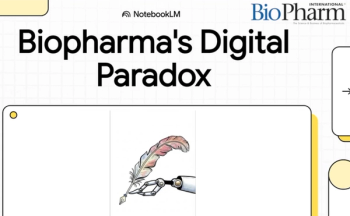
- BioPharm International-11-15-2004
- Volume 2004 Supplement
- Issue 5
Overview of GMPs
What are current good manufacturing practices (cGMPs)? Where did they come from? What are the actual "practices" described in the Code of Federal Regulations, 21 CFR. If you are new to the pharmaceutical or biotechnology industries, you may enter your first "GMP Training" session without much context or perspective. A set of arcane rules is presented; you were never taught these in science classes.
What are current good manufacturing practices (cGMPs)? Where did they come from? What are the actual "practices" described in the Code of Federal Regulations, 21 CFR. If you are new to the pharmaceutical or biotechnology industries, you may enter your first "GMP Training" session without much context or perspective. A set of arcane rules is presented; you were never taught these in science classes. What is all the fuss about? The emphasis makes you think it is difficult, but the content may seem quite simple... until you go and try to put them into practice.
GMP Rules Are Event Driven
The GMPs are federal regulations that have evolved over the last century, in response to a series of public health disasters. Different sections of the law apply to different industries; this article is concerned with those that apply to drugs, medical devices, and biological pharmaceuticals.
What these products have in common is that they are highly complex and have stringent quality requirements. The consequences of using a product that does not meet its quality attributes can be fatal. Unlike other products, consumers are unable to check the quality before they take a pill. Therefore, the government has stepped in to set minimal standards and define the systems and processes that must be in place to provide reasonable assurance of quality. The GMP regulations define those systems with enough ambiguity to permit each firm to construct its own processes that will meet the requirements. FDA is the US agency responsible for enforcing the regulations.
Safety
What is codified in the GMPs? They represent an array of tactics that seek to reduce the probability of harm to the end user of a drug, device, or biological product. Although the risks cannot be reduced to zero, following GMP guidelines greatly reduces risk. Canada, Europe, Japan, and other countries all have similar rules, and any manufacturer must comply with these rules in order to sell its products.
Unlike other products, many of a drug's quality attributes cannot be detected by the consumer. The consumer must be able to trust the quality of the medicine over time and over different production lots. To achieve this, FDA acts as a regulator and formulator of standards, defining an acceptable level of risk. This acceptable risk varies with the patient population, the disease being treated, and the values of our culture. For example, we accept more risk for a late-stage terminal patient receiving last-effort treatment than for a healthy baby about to receive a vaccine. However, we require that all medicines used in humans meet a high standard of safety and consistency.
Table I. GMP Basics
Let's look at some of the key events that led to establishment of some of the GMP rules.
Vaccine Events — Diphtheria, Tetanus, and Others
GMP rules are easier to understand after you realize they are responses to actual historical events. Vaccines were developed empirically, and the critical parameters that assured efficacy and safety were not well understood initially. As a result, the main approach to safety assurance was change control: "The process defines the product." Any change might make the vaccine unsafe, and extensive testing and an application process were necessary to gain approval.
The source of this thinking can be traced back to 1901, when children who received antitoxin for diphtheria treatment died of tetanus. The horse serum that had been used to prepare the antitoxin was contaminated with tetanus. Thus, the importance of high-quality raw materials was graphically demonstrated, along with the ability of animal-derived materials to pass diseases both known and unknown.
The Biologics Control Act was passed in 1902, to improve the assurance of safety and purity of sera, vaccines, and other biological products. The Food and Drugs Act was first passed and put into law in 1906 and revised as the Food, Drug and Cosmetic Act of 1938. The original law focused on misbranding and adulteration of foods, drinks, and drugs, and only restricted interstate commerce. At the time, the main target was patent medicines and foods that often contained toxic ingredients and made unsupported claims of effectiveness. The 1938 revision extended control to cosmetics and therapeutic devices, required that a new drug be shown to be safe, authorized factory inspections, and required that specifications be set for any unavoidable poisonous substances in drugs.
Cough Syrup
In 1937, thousands of people were exposed to toxic cough syrup, and 107 people died. The culprit was diethylene glycol, which had been used in lieu of the safer propylene glycol. A lack of control and standards for choosing ingredients that were low in toxicity was the root cause of this and other, similar events.
Both deliberate and accidental use of inappropriate raw materials has been documented. For example, jake leg, a neurological disease found in consumers of moonshine whiskey, resulted from addition of an ingredient thought to be safe. Other errors have occurred when unsuitable raw materials were used by accident. Identity mix-ups continue to be a leading cause of medical errors today. Items with similar names, packaging, or labels are easily confused with each other. Many sections of the GMP regulations seek to assure that different medicines are easily distinguishable from each other, that labels are legible, and that they contain all the relevant information.
Resulting regulations include 21CFR 211: 184, which requires that the identity of each shipment of each raw material be confirmed before it is put into use; requirements that tablets and capsules have distinctive shapes and colors and sizes that permit them to be easily distinguished by appearance; and requirements to check and double-check labels during risky operations where mix-ups are more likely to occur. For example, detailed requirements are explicitly stated in the GMP regulations for weighing raw materials and packaging drug products.
Potency: Activity per Unit
Insulin, a life saving treatment for diabetics, demonstrated the importance of controlling and accurately measuring potency, which is the ability of the drug to exert its biological effect. The dosing of insulin must be tightly controlled because both too-high and too-low levels can be life threatening. Variation in insulin potencies between product lots caused many safety events and led to the Insulin Amendment of 1941. For the first time, this required that both the manufacturer and FDA test and release drug product on a per-lot basis for purity and potency. The federal laboratory thus vetted the quality control laboratory within the firm and served as an additional checkpoint. This requirement was extended to many other biological products and phased out only after an extensive track record of consistency was established. Today, we also see the effects of the insulin experience in the rigor with which analytical release methods must be validated for linearity, selectivity, accuracy, robustness, and precision.
Vaccines: Process Validation
In the Cutter incident of 1955, two polio vaccine lots resulted in at least 250 cases of polio. The vaccine, supposedly inactivated, still contained active virus for unknown reasons. Certain lots of other vaccines, including those for yellow fever and rabies, also gave the recipients the disease instead of protecting them from it. In some cases, these incidents were traced to process changes or variances that were believed to be insignificant but actually resulted in incomplete virus inactivation.
These and other events marked the emergence of strict process validation. Ranges must be defined within which the process has a high probability of yielding a product that meets its specifications. The 1987 Guidelines for Process Validation are currently in revision. Numerous guidance documents, including FDA "Points to Consider" and International Conference on Harmonization guidelines have addressed the special issues of virological safety and methodologies for evaluating processes for freedom from adventitious agents. The Division of Biologics Control was created within NIH to oversee vaccine safety. Today this is the Center for Biologics Evaluation and Research (CBER), now part of FDA.
Sterility Assurance
The 1972 Devonport, UK, incident resulted in at least five deaths when drug products designed to be sterile became contaminated and recipients developed infections. An unwritten change to autoclave operation, communicated orally between operators, resulted in dextrose IV solutions that were not uniformly sterile. The Clothier inquiry, which examined the causes and contributing factors, identified several violations of what we now consider basic GMP.
The chain of events that compromised the safety of the drug products included inadequate maintenance, inadequate understanding of autoclave operation, and regular deviations from the written production instructions (often attempting to compensate for equipment malfunction). Together, these factors resulted in a sterilization cycle that did not assure that all vials in the autoclave were sterilized; thus, some doses were safe while others led to sepsis in patients who received them. This incident helped to define sterility assurance in an operational way. Processes and requirements for equipment validation were created, and the legal right of inspection was explicitly given to the agency.
Validation was developed as a means of documenting systematic evaluation of the sterilization cycle — building in a safety factor — and identifying the critical parameters that need to be controlled to assure process performance. The concept that quality must be designed into the process and cannot be achieved only by testing remains a central tenet of cGMP. In other words, how you make something helps to define its level of quality. Preventing errors is more effective than finding rejects because it is not possible to detect all rejects.
Thalidomide
One of the saddest events in the pharmaceutical industry occurred in the early 1960s. Thalidomide, prescribed for sleep problems, was shown to be safe in clinical trials in healthy adults and was subsequently prescribed to patients, including pregnant women, in Europe. Although safe in adults, thalidomide was toxic to fetuses, and thousands of victims were born with major birth defects. Because FDA hesitated to approve thalidomide, its impact in the US was much less severe than in Europe.
This incident demonstrated that the choice of subjects in pre-clinical and clinical trials is critically important for evaluating safety. Regulations now require reproductive studies in two or three species of animals prior to human clinical trials; newer requirements also require the consideration of gender, race, age, and other characteristics in the design of clinical trials. The data have shown that not only safety, but also efficacy, can vary among sub-populations, and are shedding new light on genetic differences between individuals. In reaction to the thalidomide epidemic, the US Congress passed the Kefauver-Harris Drug Amendments, which required that a manufacturer prove effectiveness as well as safety before marketing products.
Tylenol Tampering
In 1982, several consumers of over-the-counter Tylenol capsules suddenly died of cyanide poisoning. An intensive investigation of the production records showed that this was not the result of a raw materials mix-up during manufacturing. Rather, tampering apparently occurred on store shelves. A new vulnerability was identified in the supply chain.
The manufacturer, Johnson and Johnson, notified the public and voluntarily recalled its entire product in what is now a textbook case of how to respond to a health disaster. Their development scientists went into overdrive to re-design the capsule to make tampering more difficult and more detectable. The industry as a whole re-evaluated the means of delivering over-the-counter medicines. Regulations were updated starting in 1982, and they now require tamper-resistant packaging that aids in the detection of tampering. Without these steps, over-the-counter pharmaceuticals could have become an unacceptable safety risk.
L-Tryptophan: Impurities
In 1989, an outbreak of toxic reactions to over-the-counter L-tryptophan, a dietary supplement, resulted in 38 deaths and probably thousands of less severe reactions. The event was the result of a manufacturing process change that increased the level of a harmful byproduct. Doses that had previously been safe now caused toxicity. One response to this event was the clarification of requirements for characterizing drug impurities and new requirements for evaluation of minor impurities. In the biological products area, extensive policy and guidances have been issued on how to establish comparability when process, facility, or other changes are made.
Organization and Personnel
The most basic section of the GMP regulations, 21 CFR 211:80, can be paraphrased to state, "Thou shalt have written procedures, and thou shalt follow them." This remains the most-cited violation of the GMPs — not because it is difficult to understand but because it is such a challenge to comply. The consistency of any product results from the ability to repeat the procedures faithfully over a long period of time, despite changes in equipment, staffing, and other factors. Batch record review, performed by a quality assurance group, is one means of checking the fidelity with which the recipes are followed. Training programs seek to prevent inconsistencies from occurring and should be repeated periodically to reinforce the importance of following procedure exactly as written. The GMP regulations spell out basic qualifications and training requirements for all individuals engaged in GMP functions, including consultants.
The GMPs specify that the quality control unit must have organizational independence from manufacturing — with sole authority to release or reject product, raw materials, key procedures, specifications, and reports. Why go to such great lengths, and surely add to the cost of medicines, in this way? The answer, again, lies in human nature and experience. Production personnel are focused on delivering product on time. If asked to judge the quality of the product they have just produced, they face a conflict of interest. To assure safety for the consumer, an internal group must be insulated from supply chain pressures and given a different priority: quality. The quality unit provides systems, interprets regulations, and sets the philosophy within the firm. It is the judge when GMP decisions must be made and is held responsible, along with executive management, for product quality. The regulations make it clear that QC oversees production and assures that procedures are being followed. The ability of quality assurance to reject or recall bad product is the last safety check that keeps the consumer from harm.
Other GMP Requirements
Table I lists the key stipulations of the GMP regulations. The regulations specify basic, minimum requirements for the buildings and facilities in which pharmaceuticals are manufactured, stored, or handled. These emphasize prevention of contamination or cross-contamination, adequate labeling, and building design to prevent mix-ups. These also cover standards for the quality of the air, production surfaces, and gowning in controlled areas to maintain a clean safe environment.
Subpart F of 21 CFR 211 discusses production and process controls, defining the systems required to maintain a "state of control." A large section is devoted to control of raw materials and components, perhaps because so many tragic events resulted from the use of improper or contaminated materials.
You may wonder why the packaging and labeling section is so detailed. Even today, with the benefit of over a century of regulation in the industry, mix-ups and labeling errors still remain the number one sources of adverse events in hospitals as well as homes. The risk of mis-labeling a drug product is reduced by having dedicated, segregated areas; by controlling the labels; by instituting multiple line checks; and by performing reconciliation. Reconciliation is the process of comparing counts of labels or other items before and after a process step, in order to check for strays. The process of reconciliation has prevented numerous potential medical accidents from occurring. The discovery that 25 kgs have been removed from a 10 kg container can greatly aid in discovering that a mix-up has occurred.
Do GMPs Work?
Today, more people than ever are taking pharmaceuticals. Adverse events do happen, and some lots of product that have met specifications are released to the public, and are later recalled due to quality concerns. However, the incidence of safety problems is quite low as a result of GMP systems, talented people, and the use of advanced technologies.
As with democracy, the GMPs work quite well but not perfectly. The quality of a medicine depends on every individual person, instrument, and material in the production chain following defined systems and processes. Quality systems are the back-up that help to assure that errors will be detected and impact assessed before the product is released to the public. Most adverse events can be traced to a violation of one or more of the GMP rules, suggesting that GMP is a powerful way to assure quality. Until someone comes up with a better way, GMPs are likely to remain with us.
References
1. FDA. 21 CFR 210, 211, 800. Available at:
www.fda.gov
.
2. FDA. Milestones in US food and drug law history. Available at
3. Young JH. Sulfanilamide and diethylene glycol. In Parascandola and Whorton, editors. Chemistry and modern society: historical essays in honor of Aaron J. Ihde. Washington, DC: ACS; 1983.
Paula J. Shadle, Ph.D., is the principal consultant at Shadle Consulting, 501 McBride Drive, Lafayette, CA 94549, 925.878.5130, fax 925.962.0862,
Articles in this issue
almost 21 years ago
Why GMPs? What are GMPs and Why Do We Need Them?almost 21 years ago
Beyond GMPs: The Latest Approaches to Good Manufacturing Practicesalmost 21 years ago
Mindful Compliance: Where Knowledge and Regulations MeetNewsletter
Stay at the forefront of biopharmaceutical innovation—subscribe to BioPharm International for expert insights on drug development, manufacturing, compliance, and more.





